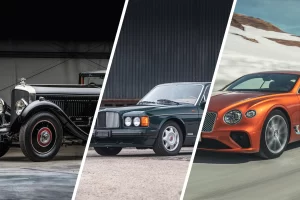The Evolution of Car Design

From the very first iterations of cars that resembled horse-drawn carriages to sleek and elegant machines today, the evolution of car design has been long and winding.
The first combustion engine automobiles tooled around Europe in 1807, but it wasn’t until Henry Ford came up with an assembly line process that affordable vehicles became widely available to the public.
The 1920s
During the 1920s, many technological advances were made to improve car design. These included front wheel drive, four-wheel drive and electric powered cars.
The 1920s also saw a large growth in the number of people who owned cars. This was due to the economic boom that occurred during this time.
The 1930s
During the 1930s, automobile design evolved to become increasingly sophisticated and artistic. The era was also a time of great expansion for the automotive industry.
It was during this time that aerodynamics became a dominant factor in the car industry. The era also saw the birth of Art Deco style.
The 1940s
The 1940s brought some major changes to the way cars looked. They were longer, lower and more massive.
The biggest innovation was a new type of car called the monocoque. This single-hull design made cars lighter and more efficient, but it also changed the look of the car dramatically.
This was a huge break with the traditional styles of the 1930s. It created a sleek, streamlined look that dominated the industry for decades.
The 1950s
After World War II, technology and engineering were advancing at a rapid pace. Car design was no exception.
One of the most significant eras in car design was the 1950s. The decade brought us innovations that revolutionized the way we drove.
The 1960s
The 1960s was a time of major change in the car industry. There were engineering advances that aimed to improve economy of use and new models started incorporating safety features like seat belts, airbags and backup lights.
The car industry also incorporated some interesting design trends. This included a growing interest in streamline design and a return to curved designs.
The 1970s
The 1970s saw major social and economic changes that impacted the design of cars. An oil crisis and environmental concerns led consumers to change their driving habits and opt for more fuel-efficient vehicles.
To meet these demands, designers began relying more on wind tunnels and aerodynamic calculations. This helped automakers develop sleek and aerodynamic designs that were also highly efficient.
The 1980s
During the 1980s, car design started to evolve away from angular shapes and rigid straight lines. Instead, softer and organic forms began to dominate.
This shift was mainly due to aerodynamics. It allowed automakers to improve the efficiency of their cars without requiring costly redesigns.
The 1990s
The 1990s saw new technologies being introduced into the automotive industry. Portable CD players became popular and impacted youth culture, mobile phones were introduced to the market, and the dot-com boom brought wealth to some entrepreneurs before it crashed in the early 2000s.
In car design, aerodynamics became increasingly important and many manufacturers incorporated air conditioning into their cars, which was a step forward from the 1980s when cooling was usually left to an individual airbag. This decade also saw the emergence of a more rounded and aerodynamic design, which was the result of a number of different design concepts.
The 2000s
The 2000s ushered in a new era of sleeker and more stylish car design. Manufacturers weren’t confined to a single format anymore, and they didn’t shy away from curves and contours either.
This decade also saw the emergence of the crossover and SUV. These vehicles were designed for the modern day adventurer. They were often smaller, more fuel efficient and offered greater versatility than sedans or station wagons.
The 2010s
The 2010s were a tumultuous decade that shaped much of what we know and love about car design. From groundbreaking innovations to the rebirth of muscle cars, these vehicles changed our world and made us better drivers.
To celebrate this exciting period, we’re taking a look at some of the most iconic vehicles from the past 10 years. We’ll also talk about some of the key trends that have affected the automotive industry during this time.
